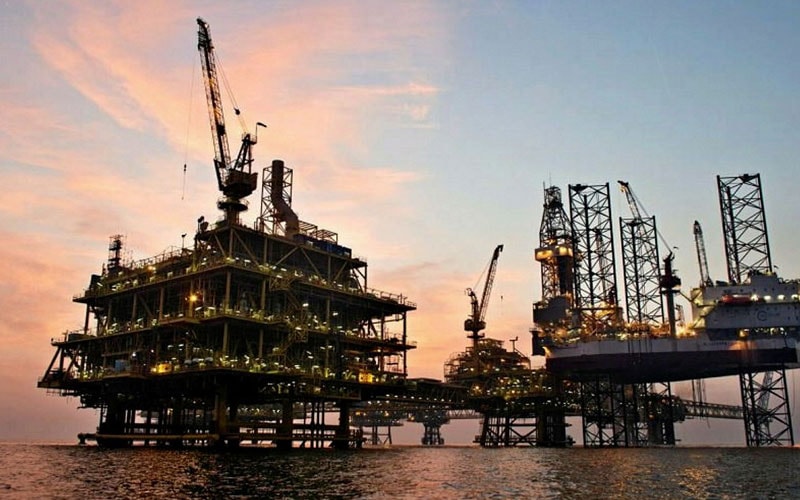
The foundation of an offshore project, like an onshore one, relies heavily on the cementing program and the design and construction of the necessary equipment to support it. As offshore projects become more complex, the technology used to construct and monitor them becomes increasingly sophisticated and specialized. The equipment and techniques used in this process are constantly evolving and changing, depending on whether the project is a subsea well or platform project; and whether it’s in shallow water or a deepwater environment.
1. Handling Equipment
Handling equipment in offshore projects helps transport materials and personnel on and off a platform. Having proper handling equipment to install, maintain, or repair an offshore structure is crucial. For example, a jacket pile gripper from IQIP helps create a temporary or permanent connection between a structure and its foundation. It could be between a pile and a jacket.
Pile drivers help hammer steel piles to place for anchoring purposes. And hook loaders help move heavy objects from one location to another by using two opposing hooks attached to a cable. Such technology allows workers to accomplish tasks more quickly and efficiently than they could.
2. Lifting Equipment
There are multiple types of lifting equipment that you can use to install offshore wind farm foundations. Each type finds its purpose in a specific foundation design, with different project requirements regarding water depth, water currents; sea floor conditions; wave heights, etc. Various offshore lifting equipment is used on offshore wind farms around Europe today: Straddle carriers, cranes, pipelay barge-mounted cranes, and tension leg platforms.
Upending tools may also help raise more giant turbines or foundation pieces. The choice of equipment depends on several factors such as;
- Budget
- Delivery time
- Environmental restrictions (such as shipping lanes)
- Shallow waters with a high current flow- where straddle carriers cannot operate effectively due to their size and weight
- There are shallow waters with the soft seabed- where cranes cannot work effectively due to their size and weight, distance from shore, or port access.
3. Pile Driving Equipment
Pile drivers, or pile-driving rigs, are necessary to drive piles into soils of different consistencies. They feature either a motorized or hydraulically operated piling hammer. Some pile driving machines can achieve up to 3,000 blows per minute to facilitate soil penetration. The technology used in these devices varies depending on what type of soil you are working on. For example, a vibratory driver for soft ground will not be as effective as an impact driver for hard surfaces.
Additionally, some machine operators may choose to use more than one type of driver based on various factors such as weather conditions or water depth at sea. Another piece of equipment that is crucial when installing offshore structures is a water hammer. Water hammer uses pressure from waves and currents to drive piles into the ocean floor.
An impact hammer uses an air chamber that builds pressure by compressing air. Once it reaches its maximum capacity, it releases all of its energy in one blow, which drives piles deep into sedimentary rock with minimal effort from workers.
4. Subsea Pile Guiding Equipment
The most efficient way to install piles is by guiding them through a vertical alignment. Subsea Pile Guiding systems use several technologies, ranging from simple (but sometimes inefficient) transverse-pressure electro-hydraulic guiders (TPEG) to hydrodynamic, magneto, and laser-guided systems. Each method has its pros & cons concerning pile driving efficiency, pile size range, positioning accuracy, environmental effects, etc.
Slotted frame TPEGs are generally suitable for smaller diameter piles where it is relatively easy to position them accurately. For more giant diameter piles (>300mm) and deeper water (>50m), more sophisticated TPEGs or magnetic guidance systems are required. The choice between these two types of TPEG will depend on site conditions, pile size, weight, and cost requirements; both have their place in deepwater installations.
Conclusion
Construction equipment needs to be efficient and safe, whether onshore or offshore. Foundations are an essential part of any offshore structure because they are what enable these structures to withstand nature’s fury. Although there is a wide variety of foundation options available, each has its strengths and weaknesses that you must consider before making any decision. The method depends on many factors, such as budget constraints and geographic location. However, engaging an experienced and reputable foundation and installation equipment supplier will ensure that your project will run safely and efficiently.







